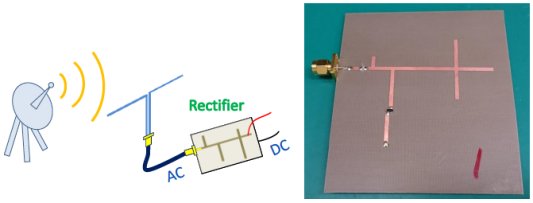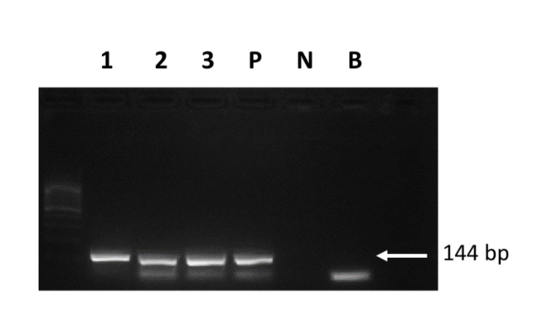The Special ARN Student Seminar in Humanosphere Science
2018-03-27
| 開催日時 | 2018-03-27 12:00–14:30 JST |
|---|
Place: HW525 (Research Building No. 1)
ZOOM Meeting ID: 627-964-782
| 12:00–12:30 | Improvement of RF-DC conversion efficiency for the microwave wireless power transmission Takashi Hirakawa(平川昂) |
| 12:30–13:00 | Genetic structure, Wolbachia infection, and behavior of the longhorn crazy ant, Paratrechina longicornis Shu-Ping Tseng |
| 13:00–13:30 | Revisiting specialist-generalist variation hypothesis, using Asian Myrmecophilus species as a model Po-Wei Hsu |
| 13:30–14:00 | Behavioral responses associated with viral infection in yellow crazy ant, Anoplolepis gracilipes Hsu Hung-Wei |
Improvement of RF-DC conversion efficiency for the microwave wireless power transmission
Time: 12:00–12:30 Speaker: Takashi Hirakawa (Master student, RISH Kyoto University) Related RISH mission: Mission 2 (Advanced Development of Science and Technology towards a Solar Energy Society) PDF file: Open_Seminar_RISH_20180327_Takashi_Hirakawa.pdf (186 532 bytes)
Abstract
Currently, the necessity of the Internet of things (IoT) technique is increasing. IoT requires a flexible configuration of sensor networks, which is hindered by wired-charging sensors. The wireless power transfer (WPT) can be the solution to this problem. Using WPT enables the charging without wires in operation. This is useful for realizing the battery-less society. There are some species in WPT, capacitive, inductive, and microwave. Our research focuses on the microwave WPT. Microwave WPT can transmit energy to very far object, for example from satellites to Earth. In addition, microwave WPT enables integrating communications and battery-less motion of the sensor network. However, there are some problems. Microwave WPT interferes with communications and its charging efficiency is lower than the wired charging. This study focused on the improvement of transmission efficiency
For improving the efficiency, high-efficiency rectifiers are required. In this paper, we studied on the rectifiers with pulse modulated signal. Pulse modulation can increase the peak-to-average power ratio of input signal. Therefore, there is possibility to improve the RF-DC conversion efficiency. Then we experimented the rectifier with pulse modulated waves. As a result, we could improve the RF-DC conversion efficiency of rectifiers using pulse modulation.
 Fig. 1 Left) Schematic of microwave WPT
Fig. 1 Left) Schematic of microwave WPT
Right) Picture of fabricated and experimented rectifier
Genetic structure, Wolbachia infection, and behavior of the longhorn crazy ant, Paratrechina longicornis
Time: 12:30–13:00 Speaker: Shu-Ping Tseng (Ph.D. student, RISH Kyoto University) Related RISH mission: Mission 5 (Quality of the Future Humanosphere) PDF file: Open_Seminar_RISH_20180327_ShuPing_Tseng.pdf (90 251 bytes)
Abstract
During the last few centuries, globalization facilitates and intensifies the spread of alien species, leading to the establishment of invasive populations and became a major threat to biodiversity and economy. Integrated studies of genetics and ecology and biogeography are critical for understanding and managing invasiveness. The longhorn crazy ant, Paratrechina longicornis, is a ubiquitous agricultural and household pest throughout most of tropical and subtropical regions. In this study, different approaches were used in understanding the invasive biology of P. longicornis. Molecular data indicates the presence of two highly divergent mtDNA clades (clades I and II) of P. longicornis, with both coexisting in most of geographical regions. Preliminary results of genetic analysis base on microsatellite data of workers ruled out East and South Asia as native areas. Behavioral test indicates that the acceptance rate of alien queens of P. longicornis is 0.23. The surveying result of myrmecophiles shows that a great diversity of insect was associated with P. longicornis, and the most ant colonies in Penang Island had serious parasitoid mite infestations.
 Fig. 1 Left) Ant pupa without parasitoid mite. Right) Ant pupa with parasitoid mite.
Fig. 1 Left) Ant pupa without parasitoid mite. Right) Ant pupa with parasitoid mite.
Revisiting specialist-generalist variation hypothesis, using asian Myrmecophilus species as model
Time: 13:00–13:30 Speaker: Po-Wei Hsu (Master student, RISH Kyoto University) Related RISH mission: Mission 5 (Quality of the Future Humanosphere) PDF file: Open_Seminar_RISH_20180327_PoWei-HSU.pdf (97 506 bytes)
Abstract
Ant cricket, Myrmecophilus, is a wingless tiny cricket living closely with ants and therefore evolves into unique lifestyle. They live in or around ant nests and feed on debris, prey on larvae, or even ask food directly through trophallaxis from workers. The ant crickets can be divided into host-specialist and host-generalist according to their host specificity, which makes them a perfect model to study the ecology and evolution of social parasitism. In this study, I will introduce the crickets that are associated with the invasive ant species Paratrechina longicornis and Anoplolepis gracilipes, which are reported to live with both specialist and generalist crickets.
First part of my talk is about identifying the ecological differences between specialist and generalist crickets. Behavioral observations and CHCs analysis are used to get a comprehensive understanding about how crickets make their lives associated with ants. Results show that specialist crickets can acquire colonial specific chemicals by allo-grooming ants and then apply on their bodies by self-grooming. Secondly, molecular approaches were used to reveal how the ecological differences between specialist and generalist crickets influence their genetic structures. In addition, a preliminary phylogenetic tree of the crickets was conducted in order to see how different strategies of symbiosis evolve in Myrmecophilus species.
 Fig. A specialist ant cricket Myrmecophilus americanus grooms its host Paratrechina longicornis worker in order to acquire CHCs.
Fig. A specialist ant cricket Myrmecophilus americanus grooms its host Paratrechina longicornis worker in order to acquire CHCs.
Behavioral responses associated with viral infection in yellow crazy ant, Anoplolepis gracilipes
Time: 13:00–13:30 Speaker: Hsu Hung-Wei (Ph.D. student, RISH Kyoto University) Related RISH mission: Mission 5 (Quality of the Future Humanosphere) PDF file: Open_Seminar_RISH_20180327_Hsu_Hung-Wei.pdf (127 992 bytes)
Abstract
Yellow crazy ant (Anoplolepis gracilipes), one of the world’s worst invasive ants, has exerted numerous negative impacts on the local community and ecosystem stability. However, little effort was directed to biological control of the invasive ants, not to mention application of pathogens as biocontrol agents. Virus-based management can be an effective biocontrol approach against the invasive species as pathogens are generally spread rapidly through inter- and intra-colony interactions, and can serve as an alternative to the broad-spectrum chemical pesticides as it has been considered safer in term of non-target effect and reduced pesticide residue. Hence, the first step to develop a sustainable management scheme on the invasive ants using viral pathogens, I 1) screened the presence of the ant virus in Penang using viral specific RT-PCR; 2) analyzed the correlation between infection status of the virus and aggression behavior among sites; and 3) monitored the behavioral responses of the ant species challenged by viral infection through and laboratory manipulation. Moreover, a field test was conducted to evaluate the efficiency of the candidate viral agent in field suppression of the invasive ants. Food preference and population density were determined. In preliminary results, I found that infection status is highly associated with the performance of aggression behavior and food preferences. All experimental data generated from this study represent a fundamental element for the future development of a practical application module for each invasive ant species using corresponding viruses.
 Fig. 1 Virus detection using specific RT-PCR. 1–3: yellow crazy ant colonies collected in Malaysia; P: positive control; N: negative control; B: blank.
Fig. 1 Virus detection using specific RT-PCR. 1–3: yellow crazy ant colonies collected in Malaysia; P: positive control; N: negative control; B: blank.
23 March, 2018
2 February, 2018
